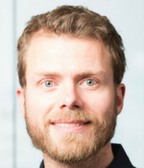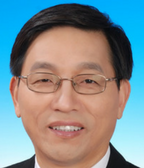The shock hasn’t worn off for Pierre Gentine.
Gentine won the Clarence Leroy Meisinger Award, one of several honors handed out during the 97th annual meeting of the American Meteorological Society (AMS) in January in Seattle.

Gentine is an associate professor at Columbia University in New York. He received U.S. Department of Energy Atmospheric System Research (ASR) funding from 2012 to 2015 as a co-principal investigator on the project “Probing the Transition from Shallow to Deep Convection Using ASR Data and Large-Eddy Simulations.”
The Meisinger Award was given to Gentine “for fundamental and diverse contributions to the understanding of land-atmosphere interactions, atmospheric convection, and ecohydrology,” according to the AMS website.
Colleague Adam Sobel, the 2010 Meisinger Award winner, nominated Gentine for the award.
“I was mostly very surprised to get it,” Gentine says. “That’s a big deal. My work is very interdisciplinary so you don’t know where you fit. They were extremely open-minded in giving me the award.”
Gentine is also a DOE Early Career Research Program five-year grant recipient (2015 to 2020) for his Cross-Scale Land-Atmosphere Experiment (CSLAEX).
McFarquhar, Li, Yuter become AMS Fellows
Meanwhile, Greg McFarquhar, a professor at the University of Illinois at Urbana-Champaign, was elected as a 2017 AMS Fellow. McFarquhar has been a funded science team member for nearly 17 years, beginning with the ARM science program in 2000 and transitioning to ASR in 2010.



“Those eligible for election to Fellow shall have made outstanding contributions to the atmospheric or related oceanic or hydrologic sciences or their applications during a substantial period of years,” the AMS constitution says.
As a principal investigator for ASR, McFarquhar’s most recent active research project was “Improved Representations of Ice Properties and Processes Derived from In Situ Aircraft Observations during ARM Field Campaigns.”
“Most of my work has been spent trying to improve our knowledge of cloud properties in order to better understand processes occurring in clouds and thus to improve our representation of such processes in models,” McFarquhar says.
McFarquhar says the most surprising aspect of his research has been the difficulty in measuring the basic properties of clouds. “Seeing how we’ve managed to reduce the uncertainty over the years has been quite nice,” he says.
Other ASR scientists elected as 2017 AMS Fellows include Zhanqing Li, a professor at the University of Maryland, College Park, and Sandra Yuter, a professor at North Carolina State University.
Li became a science team member in 1995, when he helped resolve the long-standing problem of cloud absorption anomaly through ARM-funded science. He transitioned to ASR in 2010. ASR provided funding for Li’s project “Use of ARM Mobile Facility (AMF) Data to Study Aerosol Indirect Effects in China in Comparison with Those in the U.S.” He also chaired a Clouds-Aerosol-Precipitation Interactions working group on aerosol and deep convective cloud interactions. Yuter was a funded ASR principal investigator from 2011 to 2016 for a study on cloudiness transitions within marine clouds near the Azores.
Fellow nominations are open to the society’s members. Individuals are elected each year at the AMS council’s fall meeting.
Nominations open for 2018
Deadlines to submit 2018 nominations are May 1, 2017, for awards, fellows, and lecturers, and July 1, 2017, for honorary members. The next AMS annual meeting is January 7 to 11, 2018, in Austin, Texas.
# # #
This work was supported by the U.S. Department of Energy’s Office of Science, Office of Biological and Environmental Research as part of the Atmospheric System Research Program.
ASR Scientists Receive Honors from American Meteorological Society
Published: 24 April 2017

